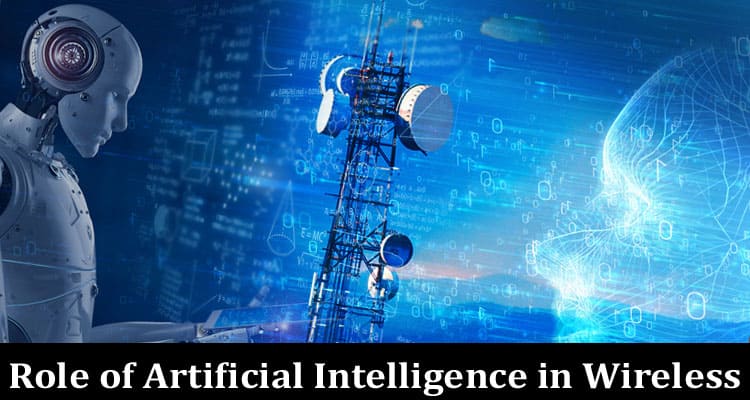From managing communications between autonomous vehicles to optimizing resource allocations in mobile calls, AI is bringing the sophistication necessary for modern wireless systems. Engineers must be prepared to incorporate these technologies into their designs.
Commissioner Simington emphasized that US technological innovation has thrived without regulatory intervention and warned that AI regulations could stifle future growth and compromise the United States’States’ technical leadership.
Radio Frequency (RF)
Radiofrequency (RF) is electromagnetic radiation that oscillates in the spectrum of 3kHz to 300 GHz and is used by wireless communications. RF waves carry information and can be detected by specialized antennas. RF radiation can also cause health issues, depending on the exposure and length of time. High levels of RF can heat biological tissue, leading to health concerns such as heat stress. The Federal Communications Commission regulates RF transmissions to protect people from exposure.
Traditionally, engineering efforts to smarten RF components have involved piecemeal optimizations that require the engineer to hand-engineer feature extraction and selection. ML and AI offer the potential to solve these problems more efficiently by automatically optimizing system parameters.
For example, ML can be applied to identify interference between base stations and mobile devices in 5G systems. This can enable the base station to intelligently allocate spectrum, which can help reduce power consumption by the mobile device and improve performance.
In addition, ML can help to optimize the physical layer design and signal processing design in 5G networks. This includes using reinforcement learning to learn optimal encoder-decoder matrices and a deep learning approach for wireless channel modeling and measurement. These techniques can enable developing of next-generation 5G wireless systems with higher data rates and lower latency.
Light
Artificial intelligence aims to build computer systems that mimic human cognitive activity, from learning and reasoning to perception and emotion. While researchers are making significant progress toward this objective, the ability of AI to understand and perform in a complex environment remains to be determined.
Despite these limitations, many people use AI today in applications as varied as recommending music or books on Amazon or answering questions through search engines like Google. Other examples include ad targeting, autonomous cars, and natural language processing, such as that found in smart speakers like Amazon Alexa or Apple Siri. Check out the AT&T Wireless promo code to avail quality promos and discounts.
Narrow AI focuses on specific, limited tasks based on programming and training. These systems can typically perform only those activities that are programmed into them and cannot understand or interpret the world around them.
Strong AI can analyze and process data and identify patterns that are difficult for humans to spot. For example, a self-driving car could recognize traffic signals, monitor the movement of vehicles and other pedestrians, assess the ebb and flow of traffic, and compute the best way to avoid collisions. This type of intelligence requires a high computational speed and energy efficiency that cannot be achieved with conventional digital processing hardware. For this reason, some research is taking inspiration from the brain to develop new types of AI processors that resemble networks of artificial neurons and synapses.
Cellular
Cellular telecommunications technology uses base stations (cell towers) that transmit and receive radio signals at licensed frequencies between the network and mobile devices. These base stations are divided into a geographic area, called a cell, that can cover a large territory or small city, depending on the topography and population density of the location. The cells are connected by backhaul networks, which ensure wireless connectivity between the cells and users.
The cellular network constantly evolves to keep up with the growing demand for data capacity and low latency. For example, 3G technology delivers high-bit-rate data services and voice calls. The newest technology, 5G, offers massive data capacity and ultra-low latency.
To improve network performance in densely populated urban areas, operators deploy smaller cells to increase the coverage radius of their primary cell. These smaller cells include macrocells, microcells, picocells, and femtocells.
For many years, cellular IoT was limited by the amount of power its sensors consumed. However, new cellular technologies capable of transferring reasonable amounts of data without draining batteries, such as 4G and especially 5G, have opened up significant opportunities for deploying cellular IoT.
Wireless Signals
When electromagnetic energy travels through a piece of metal like an antenna, it produces wireless signals. These electromagnetic waves can be sent from one device to another through the air or wires and are used for everything from AM and FM radio, TV, cellular phones, satellite signals like GPS, two-way radio, and Wi-Fi.
While AI often invokes images of sentient computer overlords from science fiction, reality is far more practical and valuable. Essentially, AI refers to the simulation of human intelligence by software-coded heuristics. These heuristics are typically used in machine learning algorithms, often applied to natural language processing (NLP) and computer vision (CV), and can help automate tasks, reduce risk, improve productivity, and lower costs.
In healthcare settings, AI is being used to assist doctors with diagnosing patients. From identifying minor anomalies in scans to helping triangulate diagnoses from symptoms and vitals, these artificial intelligence systems can help streamline workflows and enhance patient care.
Across industries, AI is also being used to replace manual labor in data processing, analytics, and assembly in manufacturing by automating processes and eliminating the need for humans. While the benefits of AI are apparent, it’s essential to recognize the risks and limitations of this technology as well. This is why the OECD has developed the first set of international principles for trustworthy AI.






